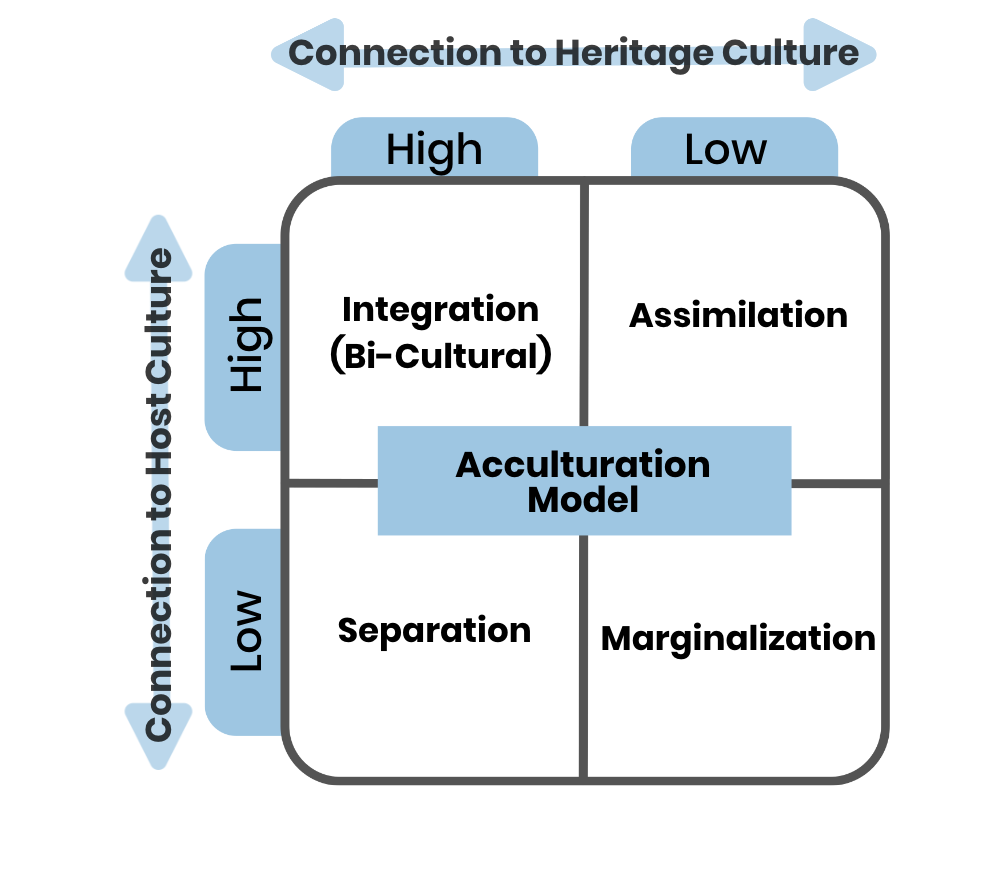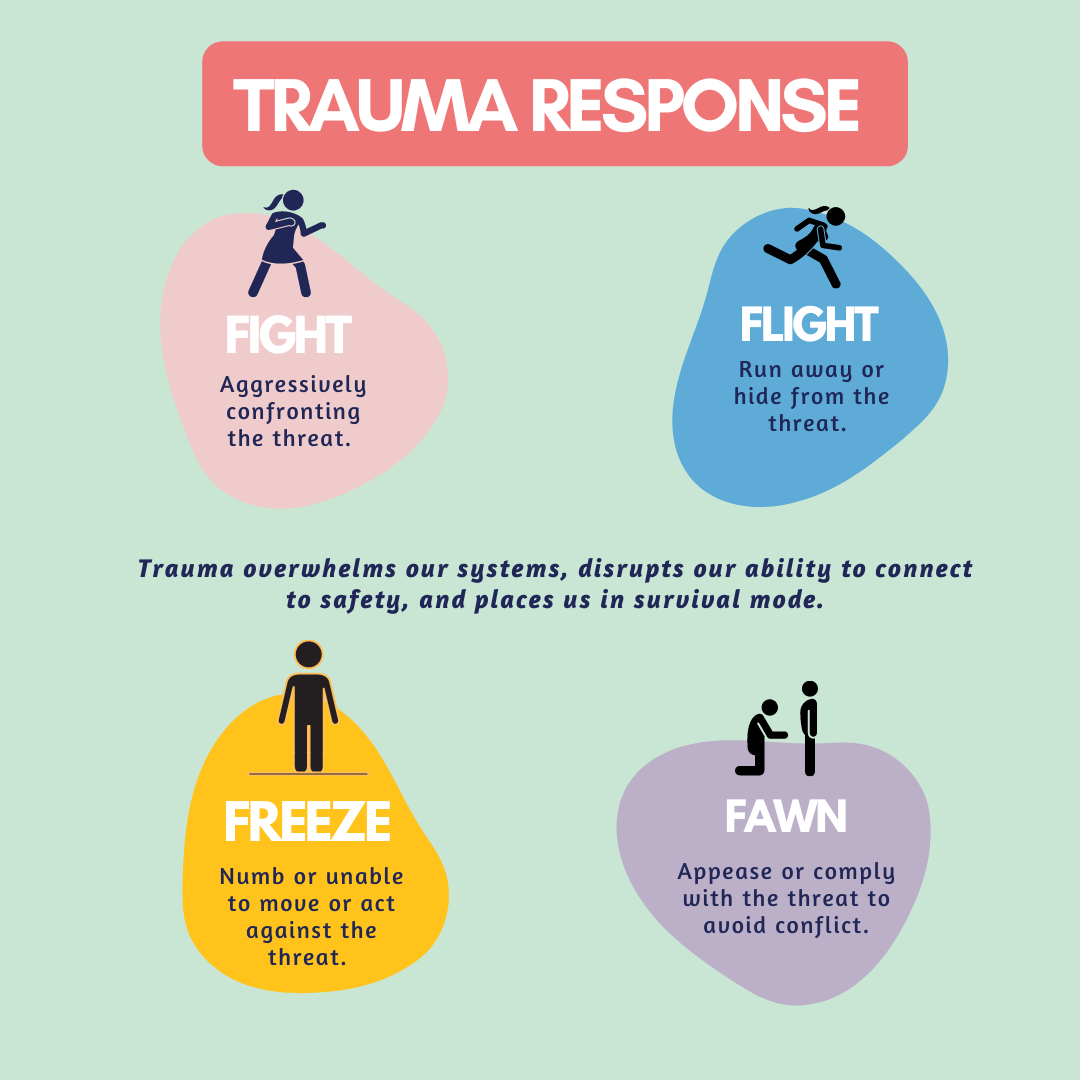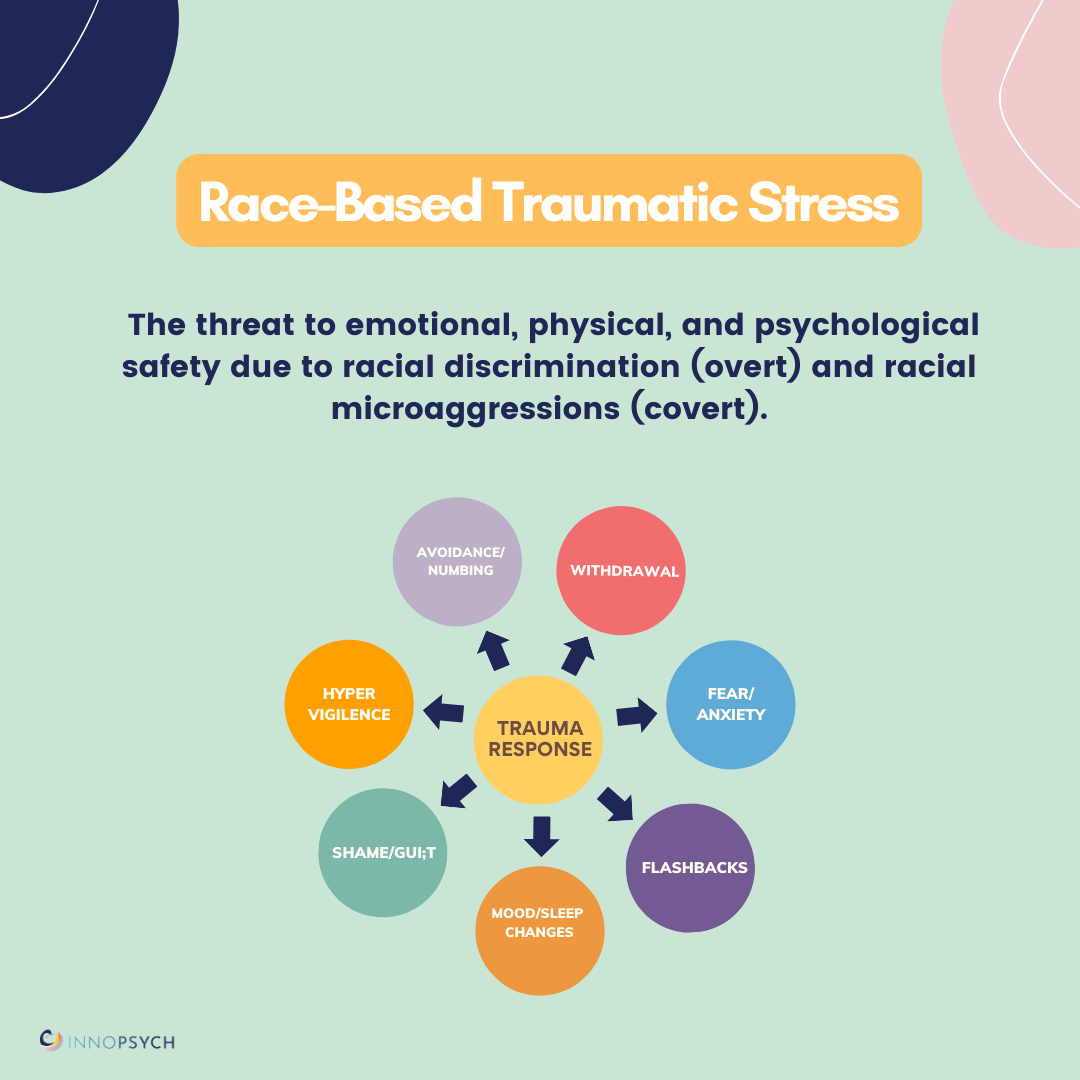The following resources were curated by Dr. Charmain Jackman, a Harvard-trained psychologist with 25+ years in the mental health field. She is the founder of InnoPsych, an organization on a mission to disrupt racial disparities in mental health and provide healing resources for communities of color.
Essential Question
How do the curves of life teach us about who we are?
The curves, or struggles, that we experience in life can cause stress and impact our ability to cope. In some cases, it may even affect our mental health and wellbeing. As you navigate these curves, you may need to use supports that you never tried before or connect with a community in a different way. In these resources, Dr. Jackman works to bring more awareness to different situations that can cause stress, particularly around the immigration experience.
Immigration Stress
People leave their countries for a myriad of reasons, such as: to find better financial opportunities; to find safer living conditions; to obtain freedom from religious, political, or other forms of prosecution; to escape natural or man-made disasters; to pursue education; and to reunite with family. Additionally, people who immigrate to the United States, especially those from developing countries, often experience barriers during their migration journey. For example, some people travel using unsafe transportation, and others may be detained or denied entry at international borders. Some may face hardship during their resettlement such as difficulty learning a new language, financial struggles due to unemployment or underemployment, and homesickness. In addition, interactions driven by discrimination and xenophobia (i.e., dislike and/or fear of people from other countries) can add to negative experiences.
Immigration stress refers to the behavioral, emotional, and cognitive responses that people experience when leaving one country to start a new life in another country. Although many people make the decision to migrate, it is often not an easy one. Attempts to obtain visas can add to the frustration and stress around migration. For example, some people who apply for visas may receive multiple rejections which can come at high financial and emotional cost.
Immigration stress can be further amplified by threats of deportation, immigration raids, inhumane immigration detention conditions, separation from family at the border, and stories of people who died while attempting to migrate. As a result, people may exhibit acute stress responses (symptoms that go away within six months) or prolonged trauma reactions (symptoms that last over six months and impacting daily life) consistent with post-traumatic stress disorder (PTSD).
- Deportation: Removal of a person from a country because they do not have authorization to stay (e.g., visa) or have stayed in the country after their authorization has expired. Immigrants in the US often live under fear of deportation, which can cause significant worry and anxiety because being sent back home may not be safe or they may no longer have ties to those in their home country.
- Immigration raids: A practice in the US in which the United States Immigration and Customs Enforcement (ICE; formerly, the Immigration and Naturalization Service, INS) deploys officers to businesses and residences to arrest and/or detain people who they believe are working and/or living in the US without authorization. Oftentimes, there may be lapses in communication with family when someone is arrested or detained, and rights usually available to US citizens are not assigned to people who are undocumented.
- Separation from family: If someone is removed or detained, it can be stressful to locate them. If there are no witnesses to the removal, people may worry that their relative was harmed or hospitalized. There are so many possibilities. This worry can then extend to other family members and, in extreme cases, can cause people to fear leaving home or worry when other family members are away from home—symptoms consistent with separation anxiety.
In families who migrate, members may hold different immigration statuses. For example, some people may be permanent residents (i.e., green card holders), citizens, Deferred Action for Childhood Arrivals (DACA) holders, or undocumented.
Due to immigration stress, there may be silence and secrecy around immigration status. For example, there have been situations where high school seniors only learned that they are undocumented when applying to college.
Acculturation Stress
Acculturation is a process in which an immigrant relates to their heritage culture and the culture of the country in which they have resettled. Acculturation captures how individuals maintain, integrate, or resist practices from the cultures of the host and heritage countries.
Acculturation stress (coined by John W. Berry) describes the experience a person has navigating the culture they were raised in (heritage culture) as they adjust to living in a new culture (host culture).1
- Integration: An individual maintains their heritage cultural values while also learning and incorporating cultural values of the host country. This is also referred to as bi-cultural.
- Assimilation: An individual adopts the cultural values of the host country and does not follow the cultural values of their heritage country.
- Separation: An individual maintains the cultural values of their heritage country and does not follow cultural values of the host country.
- Marginalization: An individual is unable to maintain their heritage values and does not connect to the cultural values of the host country.
One way that acculturation stress emerges is through intergenerational conflicts. Children often adapt to the host culture faster than their parents or grandparents. For example, parents may have expectations for their children based on their heritage, but children who have more experience living in the host country may have different values. This can be more pronounced when parents do not speak the language of the host country or their fluency is limited.
In Real Women Have Curves, we see examples of generational conflicts show up around:
- Familismo: A cultural value that is found in many Latinx and collectivist cultures where responsibility to the family is the priority. In these cultures, family (not the individual) is central and interdependence is valued. Individuals in the family do what is best for the family. However, individuality and independenceare valued in the US, where everyone makes decisions based on what’s best for them.
- Commenting on others’ bodies: In some cultures, talking about a family member’s or friend’s body, weight, or eating habits is a culturally acceptable practice.2 While this behavior may be accepted by an older generation, other generations may see this practice as harmful and may use terms such as body shaming. However, asking relatives to stop this behavior may be ignored or cause further shaming.
5 Tips for Talking to Family Members When They Comment on Your Body
- Be proactive: If you have a relative/
friend that is known to comment on other people’s bodies, have a conversation before an upcoming event. This can provide an opportunity to discuss how this impacts you or others and it may reduce any tension that could arise in the moment. Make sure that they have the time for this conversation with you. - Share your feelings: Let your family member/
friend know how you feel when they make comments about your weight, body, or eating habits. It may be helpful to talk about intention vs. impact here because they may tell you that they did not mean to harm you. Help them recognize that while they may not intend to harm you, the impact is that it did cause harm. For some, they may say that they are trying to help or just making a joke, but these comments can cause people to really feel hurt, stressed, and anxious. - Establish your boundary: Clearly state what you want from the person and how it will improve your relationship.
- Connect to other cultural changes: If people continue to resist change, some people may use the cultural values as the reason to maintain harmful behaviors. In these cases, it may be helpful to reflect on other cultural practices that have changed because new information has emerged.
- Engage in a conversation: Remain open to a conversation by asking if they have any questions or need anything clarified. You may also have questions about their own experience having people talk about their bodies.
Sample conversation: “Hello, I want to talk to you about something that is on my mind. Do you have some time for us to talk now? When you make comments about my body, I feel extremely hurt. I know you don’t mean any harm, but it makes me feel awful. I want you to stop making comments about my body because it often leaves me feeling sad, hurt, angry [insert your feelings]. I care about you and our relationship, but if you continue to make comments, I will leave when you arrive or not visit at all. I know you can do this because I have seen you change [insert a past behavior they changed]. Do you have any questions for me? I’m curious if you had this experience when you were growing up. If so, how did it make you feel? I think it’s time we change this in our family.”
Entrepreneurship Stress
There are many other stressors that immigrants face as they enter a new country. Oftentimes, there are financial stressors, especially if they do not have authorization to work, housing, and access to food and health care. Finding a job when your primary language is not the primary language of the host country can be extremely challenging. Some immigrants are unable to transfer their education and end up working in jobs that they are overqualified for. Some start businesses as a way to address some of these limitations around work.
Entrepreneurship stress is a topic that does not receive enough attention. Many entrepreneurs experience anxiety and depression around making enough revenue to support their business and their family. Many entrepreneurs experience mental health struggles that go undiagnosed. Women of color, including Latina women, are one of the fastest growing groups of entrepreneurs. According to Maddie Shepherd at Fundera, 64% of woman-owned businesses are started by women of color and Latina-owned businesses grew by 87% in 2022.3 However, there are significant racial and gender disparities in obtaining capital and the knowledge needed to help women of color entrepreneurs grow their businesses.
Trauma Responses
When we are triggered, feel threatened, or fear for our lives, our bodies engage in an automatic response directed toward the perceived threat or danger. We exhibit these responses in many situations such as environmental events, accidents, life-threatening situations, and even discussions of race. Trauma lives in our memories and in our bodies.
- Anxiety: Fears or worries that we have about situations in our lives that may be realistic or unrealistic.
- Clinical anxiety: Excessive worry or fear or intrusive thoughts that impacts a person’s ability to function in everyday life, such as working and caring for themself or others. Alternatively, a person may be able to engage in daily life activities, but it may require a tremendous effort to do so.
- Panic attack: Intense feelings of fear that cause physical reactions such as shortness of breath or trouble breathing, chest pains, accelerated heartbeat, dizziness, trembling/
shaking, racing thoughts, and fears about death. When someone is having a panic attack it can feel as if they are having a heart attack. Because of shallow breathing, it can be very hard to calm them down and people may get dizzy or even pass out because of the lack of oxygen to the brain. Using slow breathing or box breathing techniques can significantly help with regulating emotions. - Post-Traumatic Stress Disorder: The reaction a person has after experiencing a traumatic situation that causes them to fear for their lives or the lives of others. PTSD symptoms can include flashbacks or memories of the event, nightmares or vivid dreams, avoiding reminders of the incident, being wary of the environment or of others, difficulty sleeping, changes in mood, trouble focusing, or trouble recalling parts or all aspects of the traumatic event.
Racial Trauma
Racial trauma is the emotional, cognitive, and behavioral reactions that people experience in response to racial bias, discrimination, or racially motivated actions such as micro-aggressions, workplace bullying, racial violence, and racial injustice due to systemic racism and white supremacy. These reactions can manifest as flashbacks; avoidance of triggering people, content, or spaces; shutting down; withdrawing; emotional triggers when confronted with reminders of the events; distressing thoughts; hyper-vigilance or “always on guard;” mood changes and irritability.
Other forms of racial trauma include historical trauma and collective trauma. These are traumas that groups of people with similar social identities (race, ethnicity, religion, immigration status, etc.) have experienced in the past or that they have experienced or witnessed at the same time. While these traumatic experiences may have happened in the distant past, they often have very present-day impacts. Examples include the enslavement of Africans, the Holocaust, and the public murder of George Floyd.
Additionally, generational trauma refers to responses to traumatic events that are passed through different generations. Epigenetic research has shown that trauma can be passed through fourteen generations.
Coping Strategies
Stress is a natural part of life, but when we are in prolonged states of distress, it can impact physical and emotional wellbeing.
Resilience: The ability to work through disruptive life events and to thrive by actively engaging internal resources, coping strategies, and community.
- Mindfulness: A stress reduction practice that helps you to slow down by using your breath, focusing on the present, and engaging in compassion, curiosity, and kindness. Engaging in a daily mindfulness practice can help you to deal more effectively with triggers and traumatic events.
- Community healing circles: Being a part of a community offers a powerful tool to combat stress that people can encounter during their immigration journey. Circles are a way to gather people for sharing resources, fellowship, problem-solving and support.
- Storytelling: Sharing your stories helps to build community, validates your experience, and fosters healing for you and others.
- Journaling: A process of recording your thoughts to observe patterns or to connect with your thoughts and feelings. There is no right or wrong way to journal. You can write, audio record, video record, create art, dance—whatever works for you.
- Faith: Faith or spiritual beliefs can be impactful ways to help with stress. Practicing your faith through prayer, reading scriptures, and even connecting to nature and the universe can offer hope and serve as reminders that you are not alone.
- Community service/
volunteer: Helping others can be empowering by fostering a sense of gratitude and helping you regain a sense of hope. - Activism: A powerful way to address injustices that impact your community. Sharing your voice and speaking up for yourself and your community can highlight ways that you can make a change.
- Music/
dance/ celebration: Using these art forms can connect to your culture and allows you to find joy even in difficult situations.
Breathing Techniques for Stress Reduction
Intentionally controlling your breath can reduce stress by slowing down your heart rate and your thinking, helping to better regulate emotion. When you are feeling stressed or anxious, or even having a panic attack, breathing techniques can help to activate the parasympathetic nervous system and help you feel more in control. Breathing techniques are also useful when you are trying to sleep, but your thoughts are keeping you awake.
Finding Support
Therapy Resources
- InnoPsych: Directory featuring therapists of color in the United States. Therapists come from diverse racial and ethnic backgrounds, and some speak multiple languages, including Spanish.
- Therapy for Latinx: Directory featuring Latinx therapists.
- Latinx Therapy: Directory featuring Latinx therapists.
Books
- In the Country We Love by Diane Guerero
- My Time To Thrive: Feel. Grow. Heal.™ card deck is stacked with powerful tools, activities, and quotes created to kickstart your personal journey to healing from challenging and traumatic life events
Immigration Detention Databases
Footnotes
- Berry, J. W. (2006). Acculturative stress. In P. T. P. Wong & L. C. J. Wong (Eds.), Handbook of multicultural perspectives on stress and coping (pp. 287–298). Spring Publications. doi.org/10.1007/0-387-26238-5_12
- Molina, J. (March 18, 2021). Dear Tías, Please Keep Your Unsolicited Comments On My Body To Yourself. Refinery29
- Shepherd, M. (2023). Women-Owned Businesses: Statistics and Overview. Fundera by NerdWallet





